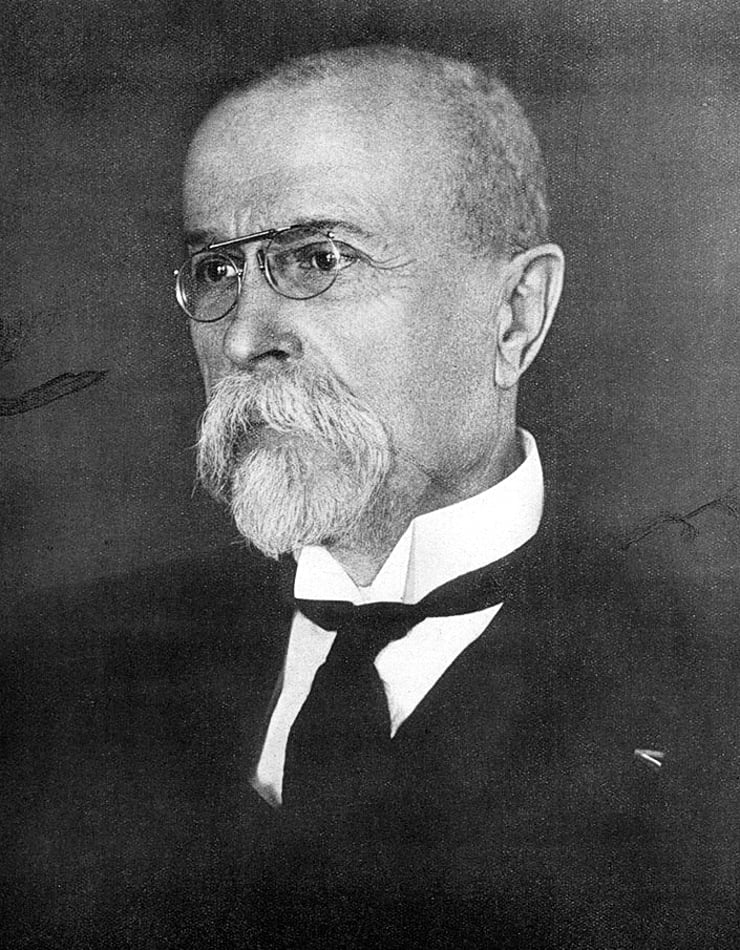Viky, děkuji za článek, rád si něco nového každý den přečtu a obdivuji vytrvalost tohoto kalendária. Není to jednoduché a hlavně také to stojí nějaký čas na přípravu. At' se dál daří. 

29.2.1920 Czechoslovakia adopted the first Constitution
Categories: Personalities , First World War , Calendar

One hundred years have passed since the adoption of the first Czechoslovak Constitution. It was formally in force until 1948, when the Communists came to power. President Masaryk insisted on greater powers for the head of state. He didn't just want to lay wreaths.
The new constitution replaced the provisional one of 1918. Based on this document, the inhabitants considered themselves as members of the "Czechoslovak nation", a term which expressed the fact that in the common state Slavic nationality exceeded German nationality. However, the constitution guaranteed full equality to the national minorities, which made up over 20 per cent of the population. "This means the use of their language in schools and during official meetings," says Václav Ryneš in his book Nation and State.
Thanks to the new document, women also gained greater civil rights, and could now elect representatives to parliament. Until then, this had been a matter for men only.
Voting on the Constitution began in the National Assembly an hour after midnight. In the end, everyone raised their hand in favour of this key document. Greater powers were given to President T. G. Masaryk, who did not want to perform only a representative function and be a wreath-layer. He thus disagreed with the very first draft of the American-style constitution. Masaryk won that the president could, for example, appoint the prime minister, determine the number of ministers, preside over cabinet meetings or veto laws.
When the seizure of the Sudetenland by the Great German Reich in 1938 created the "second" republic, its political and administrative system remained under the current 1920 Constitution. "But the political changes of the time led to the immediate destruction of the state, affecting all areas of state and local government. A necessary authoritarian democracy emerged in which legal and executive power was concentrated in the President and the government. The government's priority was primarily the new organisation of state administration and self-government and the establishment of autonomous bodies in Slovakia with Subcarpathian Rus. And the fulfilment of the obligations of the Munich Agreement on the normalisation of relations with neighbouring states," Ryneš describes the situation at the time.
Slovakia demanded autonomy at the time. When Emil Hácha became president on 30 November 1938, he entrusted Rudolf Beran with the formation of the government and at the same time appointed the autonomous government of the Slovak Republic and Subcarpathian Ruthenia. However, the Greater German Reich demanded that the policy be implemented according to its wishes. Thus, the Constitution was violated.
But the Czechoslovak Constitution was formally in force until 1948, when, after the February coup, the Communists prepared their new document in less than three months. Although it was based on the Czechoslovak constitutional charter, some passages clearly indicated what regime had come to power...
Sources:
Václav Ryneš: Nation and State, Stanislav Stanko: State Law, www.wikipedia.org
The article is included in categories:
- Archive of articles > Personalities
- Archive of articles > Wars > First World War
- Archive of articles > Calendar
Post
Ja som to tak trochu registroval...u nás sú dnes parlamentné voľby, a všade tu rezonuje fakt, že ženy môžu už sto rokov voliť....je to také symbolické.,.. 
Děkuju! Jsem ráda, že se články líbí 









